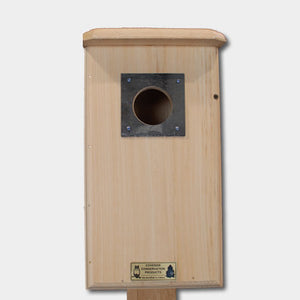
While most songbirds have three forward-facing toes and one backward-facing toe. Most woodpeckers, however, have two toes facing forward and one facing back. This is known as a zygodactyl foot and allows woodpeckers to easily climb and grasp trees and other structures. Woodpeckers move up a tree by hopping and depend on their especially stiff tail feathers to serve as a prop. They work their way up a tree, peering and poking into every nook and cranny, and then either fly in an undulating fashion to a new area or glide down to a neighboring tree to begin their foraging anew.
Woodpeckers do not get headaches from banging on trees. They have thickened skulls and powerful neck muscles that enable them to deliver sharp blows without damaging their organs. Their stout, chisel-like bills allow them to bore into wood. The tongue of a woodpecker, often covered with barbs or sticky saliva, can be extended a considerable distance in order to dislodge ants and insect larvae from deep crevices in wood and bark. For storage, the tongue is curled around the back of the head between the skull and skin.

